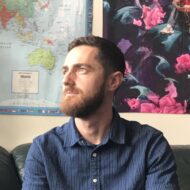I believe the world deserves more great things.
Every once in a while I get an infusion of energy that renews and revitalizes me in my journey through this crazy life. Today I got a huge dose of that from the sixth Quantified Self Austin show & tell meetup. I’d like to share a bit of what I came away with.
Self quantification can empower positive change
Speakers Jim Clardy and Chris Lloyd each presented how they had tackled health goals using quantified self (QS) methods, resulting in varying degrees of measured self improvement.
Two years ago Jim weighed 300 pounds, was depressed most of the time, and wasn’t getting any useful recommendations from his doctor. Armed with a BodyMedia FIT band and a Withings scale, he used QS feedback to optimize his exercises and food intake, losing over 100 pounds in a year. Chris set out to improve his sleep quality, harnessing data from the Zeo sleep monitor to examine potential correlations between his Vitamin D intake and amount of deep sleep.
QS data integration is an ongoing challenge
Like many QS-ers, I have data in many disparate and (currently) disconnected silos. So I am particularly interested in efforts to integrate and visualize that data in some useful fashion.
Singly has made great strides toward this already, providing an API meta-interface platform upon which developers have built integrative tools such as Timehop (a surprisingly addictive personal history app I’ve been into for a couple of months now). On an academic front, Ian Li of Carnegie Mellon University has been working on these issue for a while, and maintains a good compendium of “personal informatics” (QS) tools.
Despite these efforts, no app or web service has emerged that can usefully and efficiently integrate data from the dozens of QS tools in the marketplace into a single, unified dashboard. Part of this stems from engineering challenges, part from the closed nature of some of the systems (BodyMedia owns their users’ data, for instance), and part (it seems) from the difficulty in finding a business model to support such tools.
Relations abound
QS bridges many fields — psychology, statistics, programming, neuroscience, fitness, hardware engineering, biology, and more — a wide variety subjects that one can bring to bear to tackle the challenging problems that it presents. The other two speakers of the evening exemplified this crossover.
Local entrepreneur Rye Clifton gave a brief but fascinating account of his own work with GE, NASDAQ, and most recently TxDOT in helping them interactively and dynamically visualize information. His work aims in part to drive changes in personal habits, turning data into actionable knowledge on a grand scale, and he is interested in applying his visualization methods to the so-called “n=1” data sets of the QS world.
Finally, lawyer and consultant Kevin Leahy believes in improving his own mental health and performance, and this has driven him to seek out and cultivate intriguing techniques for redirecting the brain’s energy. His is admittedly a more qualitative than quantitative approach, but he did express interest in the Heartmath monitoring hardware and consumer EEG’s such as the MindWave as helpful technologies in the pursuit of mental health improvement.
The best is yet to come
QS is a vibrant and evolving community of hackers, engineers, scientists, and hobbyists like myself. We are excited about the consumer tools that have made personal tracking so much easier, and we’re itching to tease meaning out of the numbers. I look forward to future QS meetings here in Austin and to sharing more discoveries on the subject.
EDIT: Skyler Thomas, one of the attendees, assembled this phenomenal list of his mentions during the meeting.
